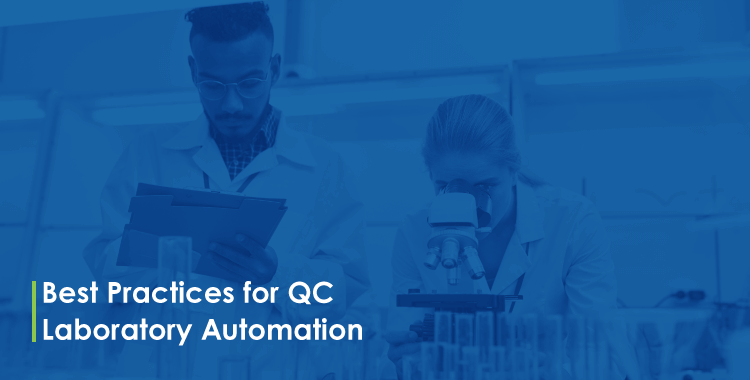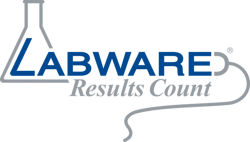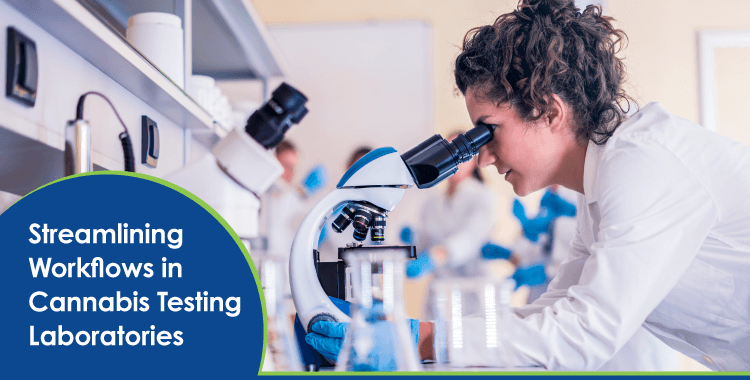
As the demand for increased efficiency and accuracy in laboratories continues to grow, LIMS implementation has become a critical aspect of modern lab management. A successful LIMS implementation can revolutionize your laboratory's operations, streamlining workflows and ensuring data integrity. To ensure your laboratory operations are modernized and streamlined, this blog post will delve into the implementation of a Laboratory Information Management System (LIMS) that caters to your specific needs.
We will discuss how to prepare your lab for automation by assessing equipment compatibility, optimizing workflows, and evaluating data management practices. Furthermore, we'll explore strategies for selecting the right LIMS solution tailored to your unique work processes while incorporating environmental monitoring capabilities.
In addition to technical considerations during LIMS implementation, managerial oversight plays a crucial role in achieving success. We'll examine ways to monitor progress throughout the process and ensure timely interventions when necessary. Finally, we will address potential challenges associated with QC laboratory automation such as initial investment costs and employee adoption while highlighting its numerous advantages including time-saving capabilities and improved data accuracy.
Preparing Your Lab for Automation
Before implementing QC laboratory automation, it is crucial to prepare your lab by evaluating current processes and identifying areas that can benefit from automation. This includes assessing the lab's equipment compatibility, workflow efficiency, and data management practices to ensure a smooth transition towards an automated system.
Assessing Equipment Compatibility for Seamless Integration
Determine if your existing equipment is compatible with the desired LIMS to ensure a smooth transition towards automation. Identify any necessary upgrades or replacements required to facilitate seamless integration between instruments and software platforms. Consult with vendors about their products' capabilities in terms of interoperability and customization options tailored specifically for your lab's needs.
Streamlining Workflows for Efficient Automation Implementation
Prioritize streamlining workflows within the laboratory before introducing automation solutions. Analyze each step in every process to identify bottlenecks or redundancies that could be eliminated through automation technology. Engage staff members in discussions about potential improvements they believe would enhance overall productivity levels while maintaining quality standards at all times - this will not only foster employee buy-in but also help ensure successful implementation.
- Evaluate sample preparation procedures
- Analyze testing methodologies
- Determine optimal reporting formats based on end-user requirements
Evaluating Data Management Practices in Preparation for LIMS
Data management plays a vital role when transitioning into an automated environment; therefore, it is essential to evaluate how well-equipped your team currently handles information storage and retrieval tasks such as creating backups or maintaining version control systems. Consider implementing a LIMS solution that supports robust data management capabilities, including automated backups and audit trails for traceability purposes.
In addition to these preparations, it is essential to provide adequate training and support for staff members who will be using the new automation tools. This ensures smooth adoption of the technology while minimizing any potential disruptions during implementation.
By assessing equipment compatibility, streamlining workflows and evaluating data management practices in preparation for LIMS implementation, your lab will be well-equipped to handle automation. Selecting the right LIMS solution is essential as it should adapt to unique processes while providing automated prompts during data entry with compatible software and environmental monitoring capabilities.
Key Takeaway: To prepare for laboratory automation, evaluate current processes and identify areas that can benefit from automation. Assess equipment compatibility, streamline workflows, and evaluate data management practices to ensure a smooth transition towards an automated system. Additionally, provide adequate training and support for staff members who will be using the new automation tools.
Selecting the Right LIMS Solution
Implementing a Laboratory Information Management System (LIMS) is crucial for successful QC laboratory automation. The right LIMS solution can streamline your lab's processes, save time and resources, and ensure top-quality performance. In this section, we will discuss how to choose a suitable LIMS solution that caters to your lab's specific needs while supporting automated prompts during data entry.
Adapting LIMS Solutions to Fit Unique Work Processes
Your chosen LIMS solution should be adaptable to the work processes actually followed in your lab. This means it should seamlessly integrate with existing equipment and workflows without causing disruptions or requiring significant changes in procedures. To achieve this adaptability, consider selecting a flexible and customizable platform that allows you to modify its features according to your requirements.
Implementing Automated Prompts During Data Entry with Compatible Software
A key aspect of an effective LIMS implementation is incorporating automated prompts during data entry. These prompts help users record accurate information as they work through various tasks by guiding them on what data points need capturing at each step of the process. Ensure that the software you select supports these automated prompts and integrates well with other systems used within your laboratory.
Environmental Monitoring Capabilities Within Chosen Platforms
In addition to streamlining workflows, another essential feature of an ideal LIMS platform is its ability to facilitate environmental monitoring of samples throughout their lifecycle. This includes tracking and storing data on more subtle trends over time, such as temperature fluctuations or humidity levels. By choosing a LIMS solution with robust environmental monitoring capabilities, you can ensure that your lab maintains the highest standards of quality control.
When selecting the right LIMS solution for your QC laboratory automation needs, it is essential to consider factors such as adaptability to unique work processes, compatibility with existing equipment and systems, automated prompts during data entry, and environmental monitoring capabilities. Taking these aspects into account will help you choose a platform that not only streamlines operations but also elevates overall performance in your laboratory. To further enhance the success of your LIMS implementation journey, be sure to involve key stakeholders from various departments within your organization early in the decision-making process. This collaborative approach will help identify potential challenges and devise strategies tailored specifically around each individual issue faced - ultimately leading towards achieving long-term success.
Selecting the right LIMS solution is essential for a successful automation implementation. Leveraging managerial oversight in this process can help maximize resource utilization and ensure timely interventions when necessary.
Key Takeaway: Choosing the right LIMS solution is crucial for successful QC laboratory automation. The selected platform should be adaptable to unique work processes, support automated prompts during data entry, and have robust environmental monitoring capabilities. Involving key stakeholders from various departments in the decision-making process can help identify potential challenges and devise tailored strategies for long-term success.
Leveraging Managerial Oversight in LIMS Implementation
As the ultimate driver of LIMS implementation, managers play an essential role in overseeing its success. Managers must maintain a bird's eye view of all laboratory processes while ensuring proper intervention when required. This helps guarantee top-quality performance as well as save valuable time and resources throughout the process.
Monitoring overall progress during implementation stages
To ensure successful implementation, it is crucial for managers to closely monitor each stage of the LIMS implementation process. By keeping track of milestones and evaluating progress regularly, they can identify potential bottlenecks or areas that require improvement. Utilizing project management tools specifically designed for LIMS implementations can be helpful in streamlining this monitoring process.
Ensuring timely interventions when necessary
In some cases, challenges may arise during the LIMS transition that require managerial intervention. These issues could range from technical difficulties to employee resistance towards new technology adoption. To address these concerns effectively, managers should establish open lines of communication with their team members and provide them with ample support through training programs or one-on-one guidance sessions if needed.
Maximizing resource utilization through managerial oversight
A key aspect of LIMS implementation is making optimal use of available resources - both human and technological ones alike. Managers should carefully assess their lab's existing equipment compatibility before investing in any additional hardware/software solutions; similarly, by identifying skill gaps within staff members and providing appropriate upskilling opportunities, they will help ensure maximum efficiency levels are achieved across various departments involved.
- Evaluating equipment needs: Assess your current lab setup to determine if any equipment upgrades or replacements are necessary for successful LIMS implementation. This could include investing in automated sample preparation systems or updating your data management software.
- Upskilling staff: Identify areas where employees may require additional training to effectively utilize new technology and processes. Offering targeted training programs can help bridge these skill gaps, ensuring a smooth transition towards an automated system.
- Budget allocation: Properly allocate financial resources for the implementation process, taking into account both initial investment costs as well as ongoing maintenance expenses associated with LIMS implementation.
In conclusion, leveraging managerial oversight is crucial for the successful implementation of LIMS. By closely monitoring progress during each stage, intervening when necessary, and maximizing resource utilization through careful planning and assessment, managers can ensure top-quality performance while saving valuable time and resources throughout the process.
By leveraging managerial oversight in automation implementation, organizations can ensure that resources are utilized to their fullest potential and the process is completed efficiently. Additionally, marrying manual processes with automated systems allows for a more comprehensive approach to streamlining operations and increasing productivity.
Key Takeaway: Managers play a crucial role in overseeing the successful implementation of LIMS by monitoring progress, intervening when necessary, and maximizing resource utilization. They should evaluate equipment needs, upskill staff members, and properly allocate financial resources for the process to ensure top-quality performance while saving valuable time and resources throughout.
Marrying Manual Processes with Automated Systems
Implementing QC laboratory automation effectively involves combining manual procedures with modern technology advancements, such as AI-powered algorithms or robotic systems, into one cohesive strategy. This approach not only streamlines operations but also enhances overall productivity levels across various departments involved in the lab processes.
Integrating AI-Powered Algorithms into Existing Workflows
Artificial intelligence (AI) has proven to be a game-changer in many industries, including laboratories. By integrating AI-powered algorithms into existing workflows, labs can optimize data analysis and decision-making processes while reducing human error potential. These advanced technologies enable faster processing of large datasets and facilitate more accurate predictions based on historical trends and patterns.
Utilizing Robotics Systems Alongside Human Expertise
In addition to AI-driven solutions, robotics systems have become increasingly prevalent in QC laboratories for tasks like sample handling and preparation. The use of robotic systems alongside human expertise ensures precision and repeatability while freeing up valuable time for scientists to focus on more complex analytical tasks that require their unique skills and knowledge.
Ensuring Seamless Transition Between Manual And Automated Processes
- Evaluate current processes: Before implementing any new technology or system within your lab environment, it's essential first to evaluate the current manual processes thoroughly. Identify areas where automation could improve efficiency without compromising quality standards.
- Customize the automation solution: It's crucial to select a LIMS solution that can be customized to fit your lab's unique needs and requirements. This ensures seamless integration between manual processes and automated systems, allowing for smooth transitions.
- Provide adequate training: Proper employee training is essential when introducing new technologies or systems into the workplace. Ensure all staff members are well-trained on how to use the new tools effectively while maintaining their existing expertise in manual procedures.
- Maintain open communication: Encourage open lines of communication between management and employees throughout the implementation process. Communication between managers and employees should be maintained during the shift from manual to automated operations, so that any potential problems can be addressed.
Incorporating QC laboratory automation by marrying manual processes with advanced technological solutions enables labs to achieve higher levels of efficiency, accuracy, and productivity without sacrificing quality standards. By carefully evaluating current workflows, selecting customizable LIMS solutions, providing proper training, and fostering open communication channels within your organization, you can successfully implement a cohesive strategy that maximizes both human expertise and cutting-edge technology advancements in your lab environment.
By leveraging the power of automated systems, manual processes can be efficiently integrated into existing workflows for improved data accuracy and traceability. Additionally, QC Laboratory Automation provides numerous advantages in terms of time-saving capabilities and enhanced efficiency due to reduced human error potential.
Key Takeaway: To effectively implement QC laboratory automation, labs should combine manual procedures with advanced technology such as AI-powered algorithms and robotics systems. This ensures precision, repeatability, faster processing of large datasets, and accurate predictions while freeing up valuable time for scientists to focus on complex analytical tasks. Adequate training and open communication channels are also crucial for a seamless transition between manual and automated processes.
Advantages of QC Laboratory Automation
Implementing automation in your QC laboratory offers numerous benefits that can elevate the performance and efficiency of your lab operations. From time savings to improved data accuracy, embracing these advantages ensures the highest quality performance across all aspects of lab processes.
Time-saving Capabilities through Streamlined Workflows
The most apparent advantage of implementing a LIMS system is the significant time savings it provides. By automating repetitive tasks and streamlining workflows, laboratories can focus on more critical activities such as data analysis or research development. This increased efficiency ultimately leads to faster turnaround times for sample processing and results delivery, enhancing overall productivity levels within your organization.
Enhanced Efficiency with Reduced Human Error Potential
A successful LIMS implementation not only saves time but also reduces the potential for human error by minimizing manual data entry requirements. With automated prompts guiding users through each step of their work process, there's less room for mistakes or oversights during sample handling and testing procedures. This enhanced accuracy helps maintain consistent high-quality output while reducing costly rework due to errors.
Improved Data Accuracy and Traceability for Audit Purposes
An essential aspect of any modern laboratory is maintaining accurate records that are easily traceable when required - especially during audits or inspections from regulatory bodies like FDA or ISO standards organizations. A well-implemented LIMS solution allows you to store vast amounts of information securely while providing easy access whenever needed - this means no more digging through stacks of paper files searching desperately trying to find specific pieces of relevant documentation.
- Environmental Monitoring: Automation in a LIMS platform allows for environmental monitoring of samples, while tracking and storing data on more subtle trends over time. This enables labs to identify potential issues early on, ensuring the highest quality results are consistently achieved.
- Paper Trail: A LIMS system leaves a paper trail that can be easily accessed during audits or inspections. By automating processes and maintaining digital records, laboratories demonstrate their commitment to compliance with industry regulations and best practices.
- Data Analysis: With all relevant information stored within your LIMS solution, you can quickly generate reports and analyze data trends - this not only helps improve overall laboratory performance but also supports decision-making processes by providing valuable insights into areas requiring attention or improvement efforts.
Incorporating automation into your QC laboratory operations through an adaptable LIMS solution offers numerous advantages that ultimately lead to increased efficiency, improved accuracy, and enhanced productivity levels. Embrace these benefits today by investing in a comprehensive LIMS implementation project, tailored specifically to meet the unique needs of your lab environment.
The advantages of QC Laboratory Automation are undeniable, as they provide time-saving capabilities and improved data accuracy. Yet, the process of setting up QC Laboratory Automation can be a daunting challenge for any business.
Key Takeaway: Implementing a LIMS system in your QC laboratory can save time, reduce human error potential, and improve data accuracy and traceability for audit purposes. Automation allows for environmental monitoring of samples while tracking and storing data on more subtle trends over time. Incorporating automation through an adaptable LIMS solution ultimately leads to increased efficiency, improved accuracy, and enhanced productivity levels.
Overcoming Challenges in QC Laboratory Automation
Implementing automation in your quality control (QC) laboratory can significantly improve productivity and efficiency. However, this automation journey is not without its challenges that must be addressed to ensure long-term success. By proactively addressing these obstacles and devising tailored strategies, you can ensure the long-term success of your lab's automation journey.
Addressing Initial Investment Costs Effectively
The initial investment required for implementing a laboratory automation system, including equipment purchases and software licensing fees, may seem daunting at first glance. To overcome this challenge, consider conducting a thorough cost-benefit analysis to determine the potential return on investment (ROI). This will help justify the expenses by highlighting areas where automation will lead to significant time savings, reduced errors, and increased throughput. Additionally, explore financing options such as leasing or purchasing refurbished equipment to minimize upfront costs.
Encouraging Employee Adoption Through Training Programs
A successful transition to an automated QC laboratory requires buy-in from all team members involved in daily operations. Resistance towards change is natural; however, providing comprehensive training programs that emphasize the benefits of automation while addressing any concerns can ease apprehensions among employees. In addition to hands-on training sessions with new equipment or software systems like LabWare LIMS, consider offering workshops focused on best practices for working alongside automated systems efficiently and safely.
Devising Strategies to Overcome Unique Implementation Obstacles
No two labs have the same needs when automating their operations - there is no single answer that works for everyone. As such, be prepared for unforeseen challenges during the implementation phase. To tackle these obstacles, establish a dedicated team responsible for troubleshooting and problem-solving throughout the process. This team should consist of individuals with diverse skill sets, including IT specialists, laboratory technicians, and project managers.
- Customization: Tailor your chosen LIMS solution to fit your lab's specific needs by working closely with software developers or consultants who can help customize its features and functionalities.
- Data Migration: Transferring existing data from legacy systems into a new LIMS platform may be time-consuming and complex; however, leveraging specialized tools like LabWare Data Migration can streamline this process while ensuring data integrity is maintained.
- Integration Challenges: Ensure seamless integration between automated equipment and your LIMS system by collaborating with vendors who offer technical support services or partnering with third-party integrators experienced in handling similar projects.
In conclusion, successful LIMS implementation requires careful planning, employee buy-in, and a dedicated team to overcome unique implementation obstacles. By addressing these challenges proactively, you can ensure a smooth implementation process and maximize the benefits of LIMS functionality for your lab.
Key Takeaway: Implementing automation in a QC laboratory can improve productivity and efficiency, but it comes with challenges. Overcoming these obstacles requires conducting cost-benefit analysis, providing comprehensive training programs for employees, and establishing a dedicated team to troubleshoot unique implementation obstacles.
FAQs in Relation to Lims Implementation
What is LIMS Implementation?
LIMS implementation refers to the process of integrating a Laboratory Information Management System (LIMS) into an existing laboratory workflow. This involves selecting a suitable LIMS solution, configuring it to meet specific lab requirements, and ensuring seamless integration with other systems for efficient data management and automation.
How to Implement a LIMS System?
Implementing a LIMS in your lab involves several steps: assessing equipment compatibility, streamlining workflows, evaluating data management practices, adapting the chosen LIMS solution to fit unique work processes, training staff on its usage, monitoring progress during implementation stages, and addressing any challenges that arise.
What are the Benefits of LIMS Implementation?
Benefits of implementing a LIMS include time-saving capabilities through streamlined workflows; enhanced efficiency by reducing human error potential; improved data accuracy and traceability for audit purposes; better resource utilization due to managerial oversight; easier environmental monitoring within platforms; and AI-powered algorithms integration.
Why Might LIMS Implementation Fail?
Lack of proper planning or resources can lead to failed implementations. Other factors include insufficient employee adoption due to inadequate training programs or resistance from staff members who prefer manual methods. Additionally, choosing incompatible software or hardware may result in unsuccessful integrations with existing systems.
Conclusion
Implementing a LIMS system can be a complex process, but with proper preparation and oversight, it can lead to significant benefits for your lab. By assessing equipment compatibility, selecting the right solution, leveraging managerial oversight, marrying manual processes with automated systems, and understanding the advantages and challenges of QC laboratory automation, you can successfully implement a LIMS system that streamlines workflows and improves data accuracy.
In conclusion, implementing a LIMS system requires careful planning and execution. However, the benefits of improved efficiency and accuracy make it worth the investment. If you're looking for a reliable LIMS vendor to help you through this process seamlessly from start to finish, then visit LabWare.
















